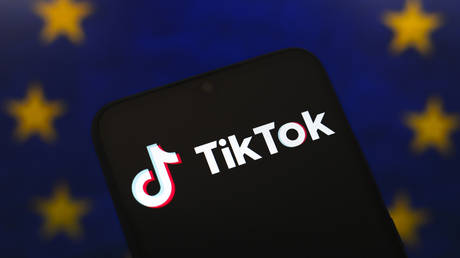ARTICLE AD BOX
A MANIAC Russian solider has driven his ‘chariot of fire’ tank across the battlefield in Ukraine.
Shocking footage shows a Russian soldier, only known as Grisha, engulfed in a flaming tank after he was hit by a Ukrainian FPV drone.
 East2West
East2West East2West
East2West East2West
East2West East2West
East2WestDriving up to 40mph, Grisha raced across the blackenedbattlefield in his ‘chariot of fire’ as black smoke billowed behind him after he delivered Russian troops to the front line.
In a video posted online, he said he was carrying out a mission on the front line.
He said: “The vehicle caught fire and I made a decision to speed to a safe place to save my combat vehicle entrusted to me, so preventing the destruction of combat equipment.”
The soldier was awarded a state award for his mad dash to safety.
Since Vladimir Putin launched his invasion in Ukraine, Russian tanks have been relentlessly targeted in Ukraine drone attacks.
In June, an ‘indestructible’ Russian tank was blown to pieces after it was targeted in a Ukrainian drone attack.
The pin-point precision attack on the ‘turtle tank’ was highlighted the accuracy by Ukraine’s 93rd Mechanised Brigade after the Russians made a ‘fatal’ flaw by leaving the hatch open.
Ukraine‘s Ministry of Defense confirmed the blow on X, writing: “Occupiers made a ‘turtle’ tank but forgot to close a hatch.
“Turtle tanks” generally refer to tanks with a heavily armored, low-profile design resembling the shape of a turtle.
The term isn’t specific to a single model but can describe various tanks known for their strong armour and defensive capabilities.
The design philosophy behind these tanks focuses on maximum protection on the battlefield.
The cheap, kamikaze, tank-blitzing precision weapons have become one of Kyiv’s biggest success stories, with several Russian targets destroyed by them.
Their long-range capabilities also save countless lives as the drone operator can be stationed away from the frontline.
THE RISE OF DRONE WARFARE
The introduction of drones has changed land warfare.
By Iona Cleave
DRONES have been deployed in the war in Ukraine on an unprecedented scale as thousands are used daily to hunt down enemy forces, guide artillery and bomb targets – transforming modern land warfare.
Ukraine has become increasingly reliant on first-person-view (FPV) drones — nimble, target-seeking, kamikaze unmanned aerial vehicles (UAVs).
Since early 2023, the cheap, explosive, flying machines have become one of Kyiv’s biggest success stories after its military ran perilously short on munitions due to long-stalled Western weapon shipments.
Since early 2023, the cheap, explosive, flying machines have become one of Kyiv’s biggest success stories after its military ran perilously short on munitions due to long-stalled Western weapon shipments.
The attack UAVs have come to define the conflict, helped by constant streams of footage filmed onboard as they tail troops, blast Russian positions or smash into tanks worth millions with ruthless precision.
The potent quadcopters cost around £300, are largely made from off-the-shelf pieces of kit and as demand soars, an army of civilians are helping to assemble them in their homes.
Some are fitted with grenades or homebuilt bombs, others are used for reconnaissance missions to identify enemy positions and guide artillery fire.
Now, almost every fighting brigade in Ukraine has an assault drone company.
With the 600-mile front frozen in hellish trench warfare, the success of FPVs on the battlefield is “undeniable”, according to the commander of Ukraine’s attack drone operations.
The senior special forces officer “Arsenal” told The Sun the quadcopters-turned-munitions now successfully blitz Putin’s targets in three out of five operations.
And as the war moves into what Arsenal calls a more “technological phase”, he argued FPVs are increasingly vital to Ukraine’s success.
He said: “If Mavic (surveillance) drones are our eyes – for the adjustment of artillery fire, withdrawal of groups to positions, reconnaissance – then FPV drones are our sword, our strike force.”
Over two thirds of Russian tanks destroyed by Ukraine so far in 2024 have been taken out using FPV drones, a Nato official told Foreign Policy.
Their long-range capabilities also save countless lives as the drone operator can be stationed away from the frontline.
And drones are not just used on the battlefield, both Ukraine and Russia are hitting targets hundreds of miles deep into enemy territory using long-range UAVs.
They are highly cost effective means to blitz factories making weapons, military bases or energy facilities.
And yet, in a constant game of cat and mouse, both sides are developing increasingly sophisticated means of stopping drones using electronic warfare.
In response, Russia and Ukraine are racing to develop UAVs guided by AI instead of GPS that can easily be jammed.
Ukraine is counting on key allies to help in this mission and to send them more expensive, high-tech drones, but deliveries are not anywhere near the sufficient scale needed.
In 2023, Ukraine’s goal was to procure 200,000 drones. For 2024, Zelensky vowed they would build a million themselves.
Between January and February this year, officials revealed FPV production already totaled 200,000.
Earlier in April, footage went viral after two kamikaze drones sparked huge explosions when they hit Russian oil depots.
Huge flames poured from the buildings and plumes of black smoke filled the sky in Smolensk.
Witnesses heard at least eight explosions as the two infernos erupted.
Meanwhile Russia admitted to shooting down as many as 35 drones in March after Ukraine targeted a plant in Krasnodar.
The attacks came as Ukraine sort to disrupt Russia’s ‘sham elections’
According to Nato official, more than two thirds of Russian tanks have been destroyed by Ukrainian FPV drones in 2024 so far.
 More than 50 per cent of Russian targets on the battle field have been hit by Ukrainian drones
More than 50 per cent of Russian targets on the battle field have been hit by Ukrainian drones East2West
East2West.png)
 5 months ago
7
5 months ago
7








 English (US)
English (US)